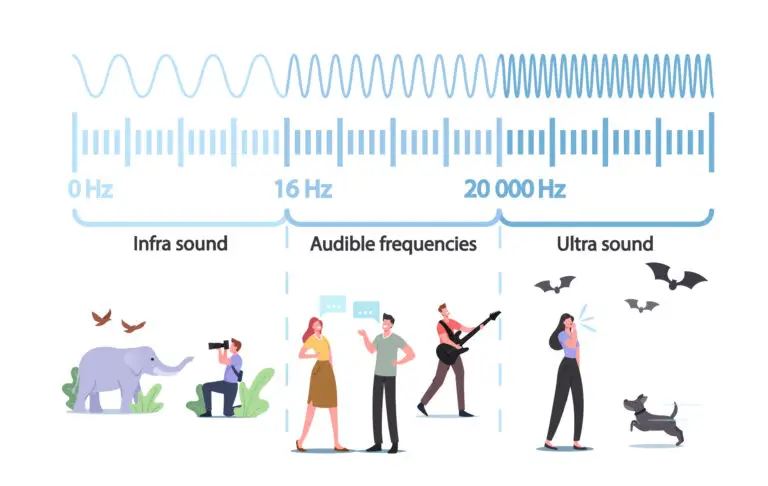Sound

Table of Contents
What is Sound?
Sound is a form of energy that propagates through various media as waves. Unlike light, which can travel through a vacuum, sound requires a medium—such as air, water, or solids—to move. This is because sound waves are mechanical waves; they rely on the vibration of particles within a medium to carry the sound from one place to another.
When an object vibrates, it causes the particles of the surrounding medium to vibrate as well. These vibrations transfer from one particle to the next, creating a wave of energy that moves outward from the source. In the air, these sound waves are changes in air pressure, moving in a pattern of compressions (where particles are close together) and rarefactions (where particles are spread apart).
The speed at which sound travels depends on the medium’s properties. For instance, sound waves move faster in water than in air and even faster in solids like metal or wood because the particles are closer and can transmit the vibrations more quickly.
Nature of Sound
Sound is a mechanical wave that needs a physical medium like air, water, or solid materials to travel through. This necessity arises because sound waves are created through the vibrations of particles in these media, carrying energy from one location to another. In a vacuum where there are no particles to vibrate, sound cannot propagate.
The process begins when an object vibrates, such as a guitar string, when plucked. These vibrations disturb the nearby particles in the medium, causing them to move back and forth. This movement creates alternating zones of compression, where particles are closer, pressure is higher, and rarefaction, where particles are further apart, lower pressure. These alternating zones of compression and rarefaction move away from the source of the vibration, forming what we perceive as sound waves.
As these sound waves travel through a medium, their speed can vary depending on their properties, such as density and elasticity. For example, sound travels faster in water than in air because water molecules are closer together, facilitating quicker transmission of the vibrations.
Characteristics of Sound Waves
Frequency
Frequency in the context of sound waves refers to how many vibrations or oscillations occur in a second, determining the pitch of the sound we hear. This measurement is expressed in hertz (Hz), with one hertz equating to one vibration per second.
When a sound source vibrates quickly, producing many waves rapidly, it creates a high-frequency sound, which we perceive as a high pitch. For example, a bird chirping or whistleblowing often has a high frequency, leading to a higher-pitched sound. Conversely, slower vibrations that produce fewer waves in the same period result in a low-frequency sound, perceived as a low pitch. This can be heard in sounds like a bass drum thump or a foghorn, which vibrate at lower frequencies.
Amplitude
Amplitude in sound waves refers to the height of the wave, which correlates with the sound’s intensity or loudness. A sound wave’s amplitude is determined by the extent of the vibration of the medium’s particles: larger vibrations result in higher amplitude and, thus, louder sounds, while smaller vibrations lead to lower amplitude and softer sounds.
The loudness of a sound, perceived by our ears, is directly related to the wave’s amplitude. High-amplitude sound waves carry more energy, and when they reach our ears, they create a stronger pressure variation, resulting in the perception of a louder sound. For example, the booming sound of thunder has a high amplitude, while the rustling of leaves produces a low-amplitude sound.
Wavelength
Wavelength in sound waves is the distance between two consecutive points of similar phase in the wave, such as from one compression to the next or from one rarefaction to the next. This distance determines the wave’s spatial characteristic and is related to the sound’s frequency and speed.
There is an inverse relationship between wavelength and frequency: higher-frequency sounds have shorter wavelengths, while lower-frequency sounds have longer wavelengths. This relationship is because higher-frequency sounds involve more vibrations or oscillations per second, which means the peaks and troughs of the wave are closer together, resulting in shorter wavelengths. Conversely, in lower-frequency sounds, the vibrations occur less frequently, so the peaks and troughs are spread further apart, leading to longer wavelengths.
Reflection, Refraction, and Diffraction of Sound
Reflection, refraction, and diffraction are fundamental behaviors of sound waves that explain how sound interacts with various environments and obstacles.
Reflection of sound waves happens when they hit a surface and bounce back. This process is what leads to echoes. When sound waves strike a hard, flat surface like a wall or a mountain, they reflect toward the source or scatter in different directions. This reflection is why, for example, you might hear your voice echoing back when you shout towards a large building or a canyon.
Refraction of sound occurs when waves pass through different media that alter their speed and direction. For instance, if sound waves travel from cool air into warmer air, they speed up and bend towards the area of cooler air, because sound travels faster in warmer air due to its lower density. Refraction can cause sound to be heard over longer distances at night over water, as the waves bend upwards towards the cooler air above.
Diffraction is the bending of sound waves around obstacles or through openings, allowing sound to be heard even if an object blocks the source. The diffraction’s extent depends on the sound’s wavelength and the obstacle’s size or opening. Longer wavelengths (lower frequencies) diffract more noticeably than shorter wavelengths (higher frequencies), so you can often hear lower-pitched sounds from a music source that is not directly visible.
Related Links
Amplitude (Physics)
Doppler Effect
Speed
Velocity